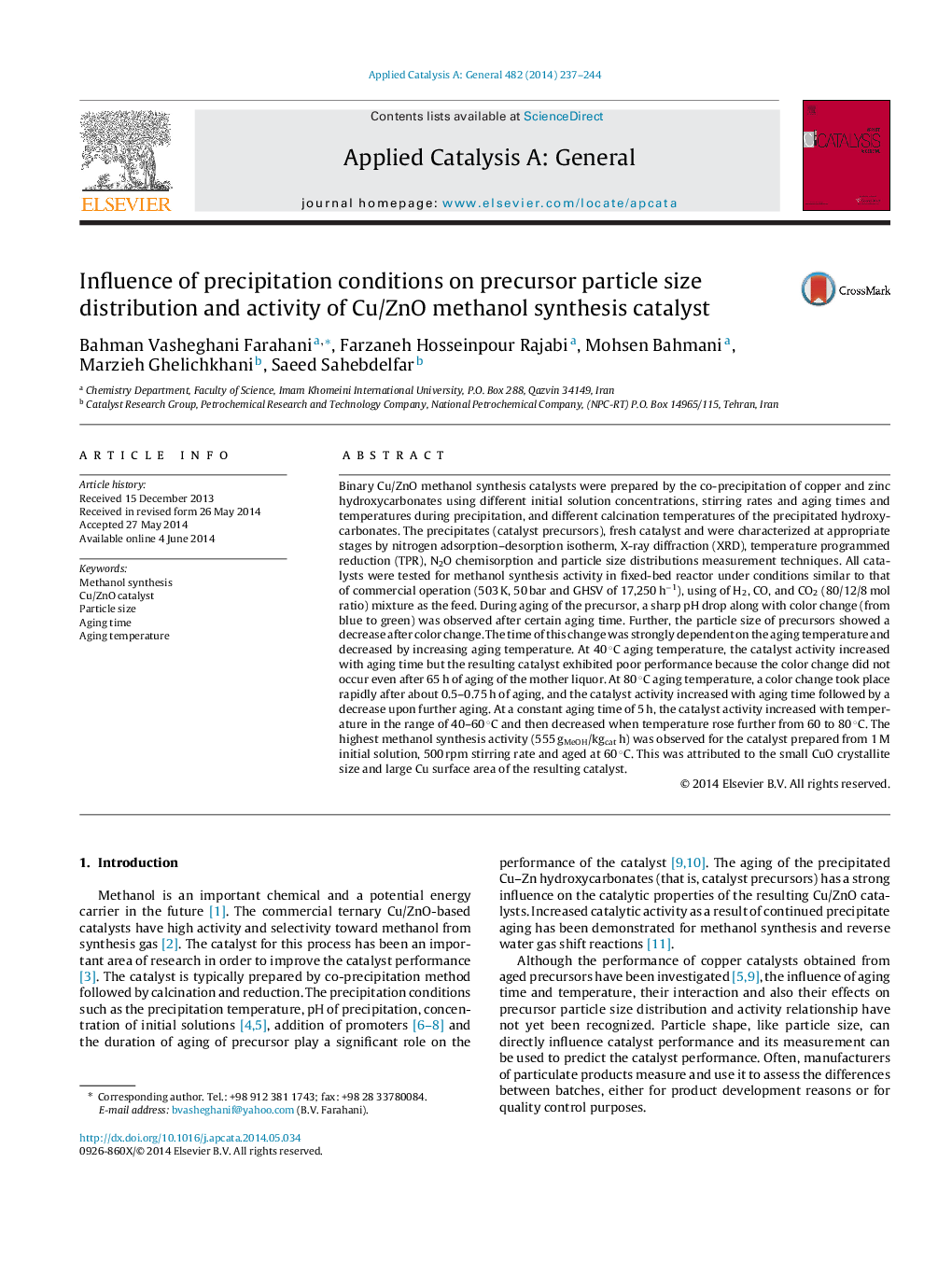| کد مقاله | کد نشریه | سال انتشار | مقاله انگلیسی | نسخه تمام متن |
|---|---|---|---|---|
| 39605 | 45828 | 2014 | 8 صفحه PDF | دانلود رایگان |

• Cu/ZnO binary methanol synthesis catalysts were prepared by the co-precipitation route under various preparation conditions.
• Samples were characterized by different methods such as XRD, TPR, particle size distributions, etc.
• The correlation between the particle size of the precipitates and the activity of catalysts were investigated.
• Achieving smaller particle size during precipitation and aging is critical to obtain high performance catalysts.
• Higher reduction temperatures (of larger CuO crystallites) promote sintering of Cu crystallites.
Binary Cu/ZnO methanol synthesis catalysts were prepared by the co-precipitation of copper and zinc hydroxycarbonates using different initial solution concentrations, stirring rates and aging times and temperatures during precipitation, and different calcination temperatures of the precipitated hydroxycarbonates. The precipitates (catalyst precursors), fresh catalyst and were characterized at appropriate stages by nitrogen adsorption–desorption isotherm, X-ray diffraction (XRD), temperature programmed reduction (TPR), N2O chemisorption and particle size distributions measurement techniques. All catalysts were tested for methanol synthesis activity in fixed-bed reactor under conditions similar to that of commercial operation (503 K, 50 bar and GHSV of 17,250 h−1), using of H2, CO, and CO2 (80/12/8 mol ratio) mixture as the feed. During aging of the precursor, a sharp pH drop along with color change (from blue to green) was observed after certain aging time. Further, the particle size of precursors showed a decrease after color change. The time of this change was strongly dependent on the aging temperature and decreased by increasing aging temperature. At 40 °C aging temperature, the catalyst activity increased with aging time but the resulting catalyst exhibited poor performance because the color change did not occur even after 65 h of aging of the mother liquor. At 80 °C aging temperature, a color change took place rapidly after about 0.5–0.75 h of aging, and the catalyst activity increased with aging time followed by a decrease upon further aging. At a constant aging time of 5 h, the catalyst activity increased with temperature in the range of 40–60 °C and then decreased when temperature rose further from 60 to 80 °C. The highest methanol synthesis activity (555 gMeOH/kgcat h) was observed for the catalyst prepared from 1 M initial solution, 500 rpm stirring rate and aged at 60 °C. This was attributed to the small CuO crystallite size and large Cu surface area of the resulting catalyst.
Figure optionsDownload high-quality image (255 K)Download as PowerPoint slide
Journal: Applied Catalysis A: General - Volume 482, 22 July 2014, Pages 237–244